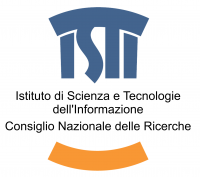Andrea D’Andrea, Franco Niccolucci, Achille Felicetti
As the general public is becoming increasingly familiar with 3D content, the current challenge is to provide high quality 3D cultural heritage representations on-line that can be explored interactively. Technologies for surveying and modelling (topographic surveying, 3D laser scanning, image-based modelling, etc.) are mature and stable; different tools have been developed to process data and well tested methods have been carried out to supply a complete chain of 3D digitisation according to the features of individual objects; finally, various file formats are now available to share easily 3D data on the web.
Many projects are currently contributing to provide 3D data online through a significant mass of 3D digitization of masterpieces, archaeological monuments and small findings. Many researchers are involved in creating metadata schema to enrich the visual content with an analytical description of the real object including the digitisation process. Schemas are dealing with particular set of information keeping track of the devices, the parameters, the light conditions, etc. used for the 3D data acquisition (provenance); the record can also store information about the purposes at the basis of the digitisation process (paradata). On the side of the exploitation of these 3D digital collections few significant achievements have been so far reached in order to make easily available and searchable on the web digital archive of 3D data.
The richest archive of 3D data likely is Europeana, the European Digital Library. To date Europeana, arisen to give access to the European Heritage hosts about 16.000 metadata of 3D models, only partially freely downloadable, witnessing objects coming from different countries and belonging to different historical periods. Europeana provides a good overview about the potentiality of sharing 3D contents, but unfortunately the most important Europeana digital libraries manages only the metadata concerning the models and not the models itself. For the lack of a standard each institution contributing to Europeana offers different solution in terms of resolution, typology of artefacts, ranging from small findings to large object, and mainly web formats, including 3D PDF or WEBGL tools. Europeana content can be searched only through metadata, no search engine has been performed specifically on the 3D content. Other thematic sites provides access to a large collection of 3D data and reconstructions, but the 3D models can be only partially reused.
This session is aimed at exploring what tools researchers are developing to exploit 3D models/world on the web, what metadata schema they are testing or using to enrich the content, how the 3D data can be interactively analyzed and reused by archaeologists, professionals, public and private institutions for their researches. So far 3D models online are rather a pretty images for a general public for dissemination, less for scientific aims. The session intends to offer an overview about future possible scenario in this field.


